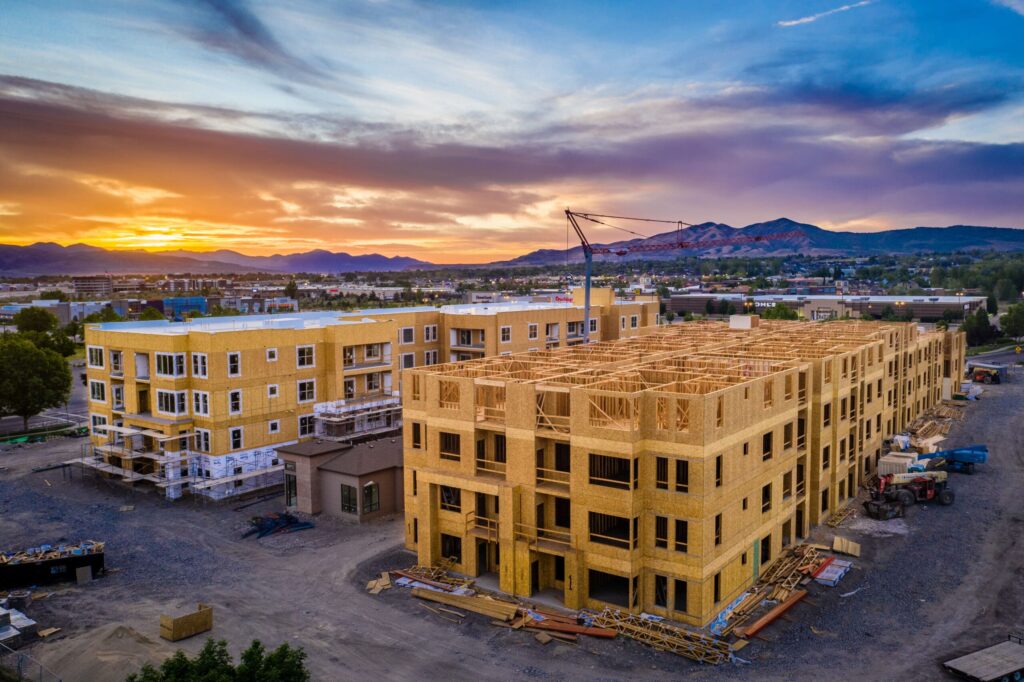The ongoing debate about the Tax Cuts and Jobs Act (TCJA) often centers on which tax cuts to retain. However, a critical policy left out from the TCJA should re-enter the tax policy conversation: neutral cost recovery (NCR) for structures. A new bill introduced by Rep. Kevin Hern (R-OK), the Renewing Investment in American Workers and Supply Chains Act, aims to address this by adopting neutral cost recovery, which would significantly incentivize investment in the US, boosting economic output, wages, and employment.
**Enhanced Investment through Neutral Cost Recovery**
The bill proposes reducing cost recovery schedules for both residential and nonresidential structures to 20 years and including yearly adjustments for inflation and opportunity costs. The inflation adjustment would vary annually with actual inflation, while the opportunity cost adjustment would remain fixed at 3 percent. These changes would eliminate the current tax penalty on investment in structures, stimulating additional capital investment and enhancing economic growth and wages.
According to Tax Foundation’s model, the Hern proposal could increase the capital stock by 2.3 percent, GDP by 1.3 percent, wages by 1.0 percent, and create 276,000 full-time equivalent (FTE) jobs. American incomes, measured by GNP, would rise by 1.1 percent. In 2024 dollars, this 2.3 percent capital stock increase would translate to a $1.8 trillion boost in the long-term level of productive assets in the economy. The maps below illustrate the distribution of increased FTE employment and capital stock across states and DC.
**Revenue and Economic Impact**
Over a decade, revenue would initially decrease by $257 billion due to accelerated depreciation deductions and the proposed adjustments. However, the resulting revenue feedback from higher wages and increased hours worked could generate a $344 billion increase in revenue on a dynamic basis.
**Understanding Neutral Cost Recovery**
To grasp the significance of neutral cost recovery, it is essential to understand the corporate income tax structure. The corporate income tax is levied on profits, defined as revenues minus costs. Ideally, businesses should deduct the full cost of their capital investments upfront, just as they deduct operating expenses like wages and salaries.
Presently, companies must spread capital investment deductions over several years. This delay, combined with inflation, results in companies failing to recover the actual cost of their investments fully. Different assets have varied recovery periods, ranging from 3 to 20 years for equipment and machinery, and up to 27.5 and 39 years for residential and nonresidential buildings, respectively. Research shows that buildings typically wear out after around 19 years, factoring in maintenance costs.
**Policy Improvements through TCJA**
The TCJA improved cost recovery for some investments by introducing 100 percent bonus depreciation for short-lived assets, allowing immediate deductions for investments in machinery and equipment. However, this provision is phasing out, and structures did not experience similar improvements in tax treatment.
**Challenges and Solutions with Full Deductibility**
Allowing full deductibility of investments would eliminate inflation and opportunity cost penalties but poses fiscal challenges. The upfront transition cost to the federal budget and the risk of companies being unable to fully use substantial deductions immediately are significant concerns. NCR for structures offers a balanced solution by maintaining longer depreciation schedules while adjusting deductions over time, enabling businesses to deduct the full real cost of their investments without an immediate tax revenue loss.
**Long-Term Economic Benefits**
Currently, the tax system significantly undervalues investments in structures, with deductions for residential structures spread over 27.5 years and nonresidential structures over 39 years. Neutral cost recovery adjustments would restore full cost recovery, effectively incentivizing investment.
For residential structures, full deductibility could stimulate housing construction, particularly multifamily housing, addressing affordability challenges. Historical tax reforms, like those in the Tax Reform Act of 1986, extended the recovery schedule and impacted housing starts negatively. Rectifying this through neutral cost recovery adjustments could reverse such trends, boosting investment in the housing sector.
Embracing neutral cost recovery for structures could transform the investment landscape, driving growth and productivity across various sectors. Subscribe to our newsletter for more insights on how tax policies impact you.
Stay informed on the tax policies impacting you.
Subscribe to get insights from our trusted experts delivered straight to your inbox.
Share



